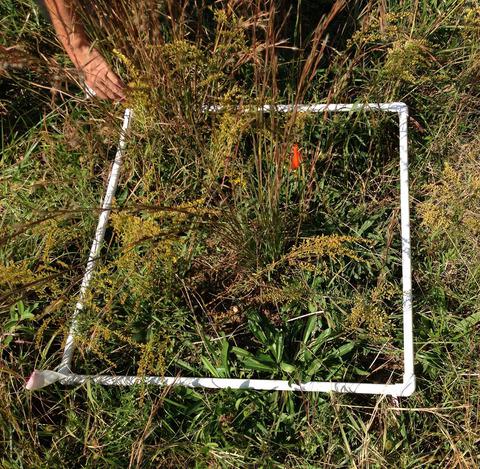Our official English website, www.x-mol.net, welcomes your
feedback! (Note: you will need to create a separate account there.)
Initial richness, consumer pressure and soil resources jointly affect plant diversity and resource strategies during a successional field experiment
Journal of Ecology ( IF 5.3 ) Pub Date : 2020-03-30 , DOI: 10.1111/1365-2745.13396 Peter A. Wilfahrt 1, 2 , Fletcher W. Halliday 3 , Robert W. Heckman 3
中文翻译:

在连续的田间试验中,最初的丰富度,消费者压力和土壤资源共同影响植物的多样性和资源策略
更新日期:2020-03-30
Journal of Ecology ( IF 5.3 ) Pub Date : 2020-03-30 , DOI: 10.1111/1365-2745.13396 Peter A. Wilfahrt 1, 2 , Fletcher W. Halliday 3 , Robert W. Heckman 3
Affiliation

|
- Plant community succession is structured by initial richness, plant consumer pressure and soil resource supply. These drivers influence species' trait trade‐offs that underlie temporal changes in plant community diversity. Importantly, how these drivers interact with each other and through time and whether they act on different facets of plant community diversity by promoting different plant trade‐off strategies remains poorly understood.
- We experimentally manipulated initial plant richness, consumer pressure via pesticide spraying and soil resource supply via fertilization across 4 years of old field succession. We then allowed natural colonization and extinction to occur and examined how the three drivers influenced succession. Specifically, we examined changes in temporal dynamics by conducting yearly taxonomic cover surveys and measuring light penetration to the ground. In the third year, we measured vegetative height and specific leaf area (SLA), and investigated seed mass using a trait database.
- Higher initial richness, lower consumer pressure and increased soil resource supply all decreased colonizing species richness and light availability and variably altered species evenness. These effects generally acted additively rather than interactively in driving community diversity during succession. However, soil resource supply suppressed consumer pressure effects on species richness and light availability, while consumer pressure and soil resource supply modified initial richness effects on light availability. Treatments acted on different trait identities, revealing different mechanisms underlying taxonomic responses. Initial richness effects on seed mass of colonizing species were modified by soil resource supply. Decreased consumer pressure increased intraspecific community height and decreased interspecific SLA. Increased soil resource supply increased community height, SLA and seed mass.
- Synthesis. Our results suggest species' resource strategies underlie plant diversity responses to consumer pressure and soil resource supply. Resource addition promoted resource‐acquisitive species; consumer pressure disadvantaged resource‐conservative species. Meanwhile, initial richness altered subsequent community composition primarily through persistence of early residents. We show that community responses to drivers of succession depend on underlying trait trade‐offs of resident species, and these trade‐offs influence community diversity across succession.
中文翻译:

在连续的田间试验中,最初的丰富度,消费者压力和土壤资源共同影响植物的多样性和资源策略
- 植物群落演替由初始丰富度,植物消费者压力和土壤资源供应构成。这些驱动因素会影响物种的特征权衡,而这种权衡是植物群落多样性随时间变化的基础。重要的是,人们对这些驱动因素如何相互影响以及随着时间的流逝如何相互作用,以及它们是否通过促进不同的植物权衡策略而在植物群落多样性的不同方面起作用,仍然知之甚少。
- 在过去4年的田间演替中,我们通过实验操作来控制植物的初始肥力,通过喷洒农药引起的消费者压力以及通过施肥提供土壤资源。然后,我们让自然定居和灭绝发生,并研究了这三个驱动因素如何影响继承。具体来说,我们通过进行年度分类覆盖调查并测量光线对地面的穿透力来检查时间动态的变化。第三年,我们测量了营养高度和比叶面积(SLA),并使用性状数据库调查了种子质量。
- 较高的初始丰富度,较低的消费者压力和增加的土壤资源供应都降低了殖民物种的丰富度和光利用率,并改变了物种的均匀度。这些作用通常在继承过程中在加深社区多样性方面起到加性而非交互作用。然而,土壤资源供应抑制了消费者压力对物种丰富度和光能利用率的影响,而消费者压力和土壤资源供应却改变了初始丰富度对光利用率的影响。处理作用于不同的性状特征,揭示了分类学反应基础的不同机制。土壤资源的供应改变了最初富集对定居物种种子质量的影响。消费者压力的降低增加了种内群落高度,降低了种间SLA。
- 综合。我们的结果表明,物种的资源策略是植物多样性对消费者压力和土壤资源供应的响应基础。增加资源促进了资源获取物种;消费者压力不利于资源保护物种。同时,最初的富裕主要通过早期居民的坚持改变了后来的社区组成。我们表明,社区对演替驱动力的反应取决于常驻物种的基本特征权衡,而这些权衡会影响整个演替过程中的社区多样性。










































 京公网安备 11010802027423号
京公网安备 11010802027423号